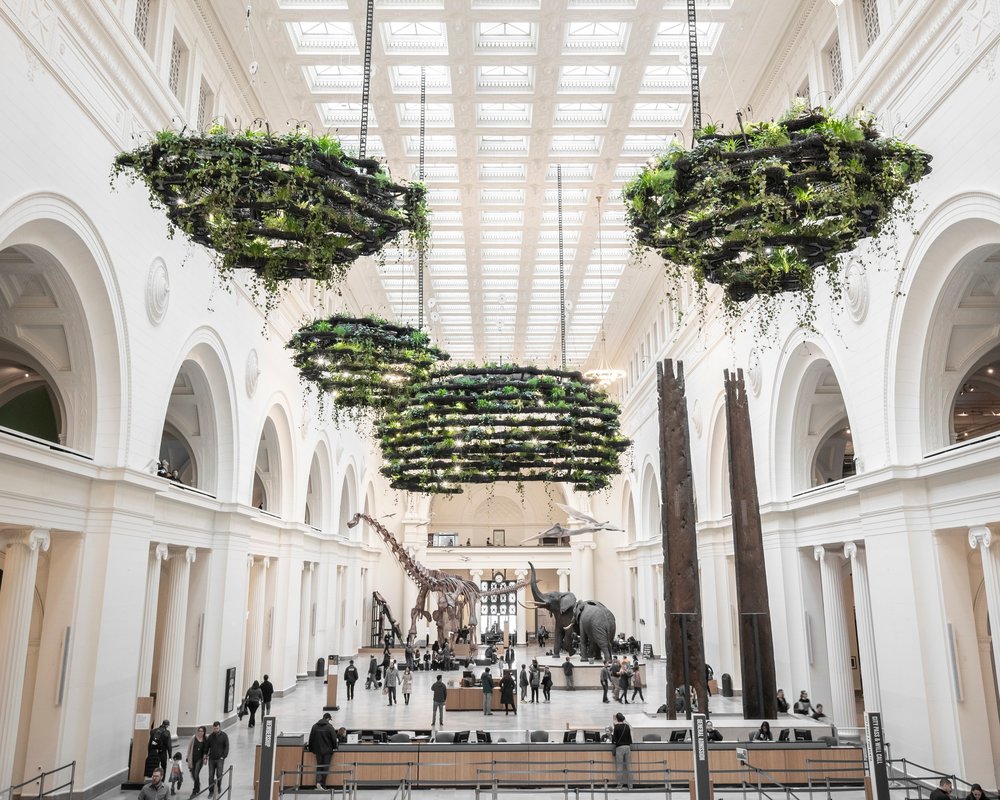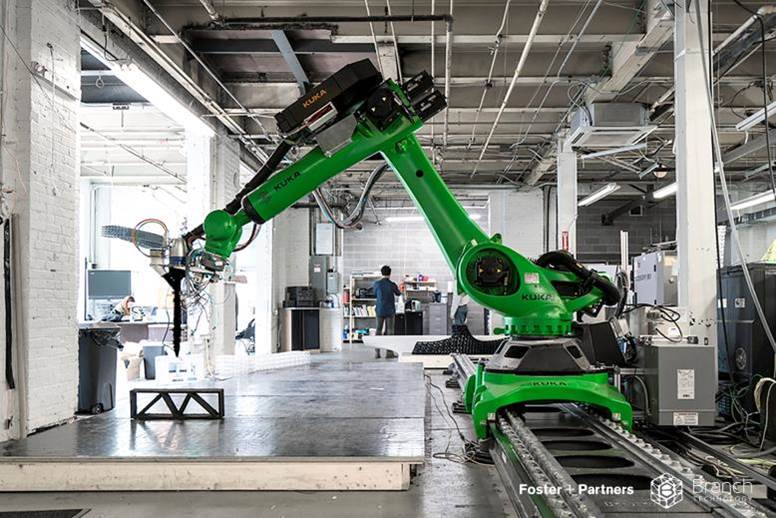Branch Technology has announced that it has closed an $11 million funding round for its additive construction technology. With its 2018 Series A round, this brings the startup’s total funding to $22 million, allowing the firm to expanding its team and further develop its unique approach to construction 3D printing.
When we first learned about the company, Branch Technology had developed a method called Cellular Fabrication (C-Fab) for 3D printing polymer lattice structures that could then be sprayed with insulation and concrete to create extremely lightweight, yet structurally impressive prefab components. The process relies on industrial robotic arms outfitted with polymer extruders and attached to massive rails, resulting in one of the largest freeform 3D printing systems yet. According to the firm, elements 3D printed with C-Fab use 20 times less material than traditional layered printing, while still enabling remarkable strength-to-weight ratios.
Since its 2015 launch, Branch Technology has gone on to complete a number of projects that demonstrate some of the possibilities of C-Fab, including the “Nature Clouds” hanging garden displayed at the Chicago Field Museum of Natural History and the One City bandshell in Nashville. Though these works have not yet incorporated structural elements, they are able to showcase the types of freeform pieces that can be created using 3D printing technology. The company now claims to boast the “largest fleet of construction scale 3D printers.” Correction, 12/9/2020: Branch Technology has informed us that, in fact, many of its projects are structural, “including the world’s largest 3D printed span, which is the OneCity Pavilion in Nashville, TN. The optimized and structural lattice makes up 100% of the structure.”

“Nature Clouds”, 3D printed hanging gardens displayed at the Chicago Field Museum of Natural History. Image courtesy of Branch Technology.
Branch now offers four specific products, which include the Freeform Polymer Matrix: a bare 3D-printed polymer structure, meant mostly for aesthetic purposes. The Filled + Milled Composite product takes the aforementioned matrix and adds other materials but lacks a finished external coating. That can be found in Finished Facade Panel product, which builds on the Filled + Milled Composite with a GFRC or synthetic stucco exterior, resulting in a completed wall. Finally, Connections + Hardware can be used to mount these walls to create large panels.
With the funding round led by EquipmentShare, with backing from Brick & Mortar Ventures, Chattanooga Renaissance Fund, and other previous investors, Branch Technology will be able to develop even further. The company plans to expand its team further, incorporating experts in building science, software and engineering. Additionally, it aims to grow its fleet of 3D printers and its overall capabilities.
Mitch Lewandowski, the Chief Commercial Officer for Branch Technology, said of the news, “This funding supports several enterprise relationships that will officially launch in 2021 and accelerates new joint capabilities that will serve the broader construction market.”
EquipmentShare is a Missouri-based construction tech company that has developed a platform for real-time, cloud-based tracking of construction equipment. With its tracking tools, companies can quantify machine utilization, monitor employee hours and shifts, and perform other management tasks for construction machinery on a site. The company was founded in 2015 and has already spread across 27 states and across two countries.
EquipmentShare’s interest in Branch Technology could stem from a synergy in digitizing the construction industry. Due to the one-off nature of most buildings, it has been difficult to deploy the same quality control and time management tools that are found in the manufacturing sector to construction.
For this reason, new technologies such as building information modeling (BIM) are being increasingly implemented to try to make construction as predictable and manageable as possible. Prefabrication will go a long way to ensure the quality control of individual components, but there is still significant progress to be made. 3D printing has the potential to digitize the construction of some building elements and it sounds as though EquipmentShare is attempting to handle the logistics of machinery on-site. As Branch Technology moves forward, along with the additive construction segment as a whole, we may begin to see the contours of a digital construction industry actually take shape.
Subscribe to Our Email Newsletter
Stay up-to-date on all the latest news from the 3D printing industry and receive information and offers from third party vendors.
Print Services
Upload your 3D Models and get them printed quickly and efficiently.
You May Also Like
Consolidation in AM: How 2025 Is Shaping the Industry’s New Normal
The first half of 2025 has been marked by a clear shift in the additive manufacturing (AM) industry. Companies are no longer just focused on developing new tech by themselves....
Etsy Design Rule Change Reduces Selection of 3D Printed Goods
Online marketplace Etsy has implemented a rule change requiring all 3D printed goods on the site to be original designs. The update to the site’s Creativity Standards states, ¨Items produced using...
U.S. Congress Calls Out 3D Printing in Proposal for Commercial Reserve Manufacturing Network
Last week, the U.S. House of Representatives’ Appropriations Committee moved the FY 2026 defense bill forward to the House floor. Included in the legislation is a $131 million proposal for...
Transforming From Tourist to Native: Duro CEO Michael Corr Explains Why the Company Rebuilt its PLM Software on AI
In these early innings of the AI boom, many market analysts have expressed concern that AI spend has gotten too far ahead of the technology’s proven ability to deliver significant...

































